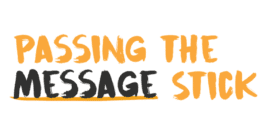What role does the board play in government relations?

17 June 2020 at 5:44 pm
The board should be monitoring the function, insight and leadership of government engagement through four lenses, writes Neil Pharaoh.
In the social purpose sector two of the most common questions asked are what role the board should play in government engagement, and most importantly, where risk and strategy figure in this equation.
Essentially, the role of the board can be divided into four parts: strategy, finance, risk and governance; and while my AICD course instructor would probably have many more things to add, these are its core functions. So, where does this leave government engagement and government relations? In short, I believe the board should be monitoring the function, insight and leadership of government engagement through all four of these lenses.
Let’s start with strategy. The board should set the strategy for government engagement: do you want policy change, regulatory change, funding or legislation? How does it align with your strategic plan and purpose? Several years ago, I developed a basic framework for a four-page government engagement strategy. In it, the first page covers the questions of what you want and need, why you are doing it and why it is important. The second page outlines how everything relates to politics: what are you doing on the ground? The third and fourth pages talk about framing the issue within a political, media and policy framework. This is the key – taking the issue away from being about you and having a strategy in place for engaging the media that aligns with your objectives. For instance, how it looks on a media release or government announcement is critical. Essential for any board is making sure the nuances of the changes you want (e.g. which clauses of regulation apply, what draft text goes in the legislation) are in alignment with your government engagement strategy.
The most important thing the board can do in relation to finance, is be as specific as possible as to the requests you are making of the government, be it local, state or federal. What short, mid and long-term projects do you want to partner with the government on, and for each time horizon, what is the low, medium and large investment you are seeking from government. Often, this clarity from the board is lacking – various members have different ideas, and the list of projects and investment returns are not up to date, refreshed via reviews in strategy, or kept contemporary.
In addition to your main project, you should also keep in your back pocket one or two projects that could quickly be developed should the right conditions and opportunities arise. The question for you, whether on a board or reporting to one, is are you all in agreement on the projects you are seeking government funding and support for? Do you have each of them in a short one-page document and are management, operations and board all in alignment?
I sit on several community boards and have advised many others, but to my knowledge, there are only a small number who actively measure, monitor, rate and assess risk from a government engagement perspective. Just as you have reputational, financial and organisational risk, so does almost any organisation working in Australia have government risk. Whether it’s a change in funding or policy, movements in departments and key contacts or a change in government, every one of these scenarios has both potential risk and opportunity which a board should be monitoring. A simple risk framework for government engagement is easy: use your current risk framework (likelihood and impact are the most common axis used on risk matrixes) and load up all of your government risk and opportunities and how you manage, mitigate or measure them.
Finally, governance is a critical role for all boards. This includes the performance of the CEO, the leadership team and ensuring that policies, procedures, strategy and risk are all balanced, calibrated and reviewed by the board. Government engagement from a governance perspective should form a key part of things like the CEO’s report – what government stakeholders have they met? What proposals and discussions and messaging documents have been prepared? What framing and systems are in place to ensure the entire organisation has a structural and systemic approach to government engagement? What CRM or data monitoring systems are in place? Are we investing sufficient resources in people working in and around government engagement? Is the strategy up to date? Do we have the capability and capacity to deliver? The list goes on, however, asking the right questions and ensuring government engagement is on the agenda is necessary to ensure you are meeting your governance requirements on the board.
While government engagement can be intimidating for many boards, the same key functions of governance, risk, strategy and finance all apply to government engagement, lobbying, advocacy and campaigning. For smaller organisations with an active board, it is perfectly reasonable to have board members engaged and participating in government engagement activities, likewise for any working boards. In the end, government engagement works best when every department in an organisation from the board down is working as a whole towards a common, clearly defined objective.
About the author: Neil Pharaoh has spent most of his voluntary and professional life in and around social purpose organisations, government, public policy, and advocacy. Neil has been behind many leading social policy and advocacy campaigns on gender rights, equality, medical research, and education, and ran for Parliament in Victoria in 2014 and 2018. Neil is co-founder and director of Tanck, which focuses on better engagement with government, and regularly runs workshops and advocacy sessions and advises leading social purpose organisations on their government engagement strategy and systems.
Happenings on the hill is a fortnightly column focusing on all things politics, policy, campaigns and advocacy. Stay tuned for updates around political trends and elections, lobbying and advocacy news, and hints, tips and ideas on government engagement that are specifically written for the social purpose/for purpose sector.
If you have any ideas, suggestions, tips or questions, please feel free to email Neil Pharaoh at neil@neilpharaoh.com.au or reach out to him via social media at LinkedIn, Twitter, Instagram and Facebook @neilpharaoh.







